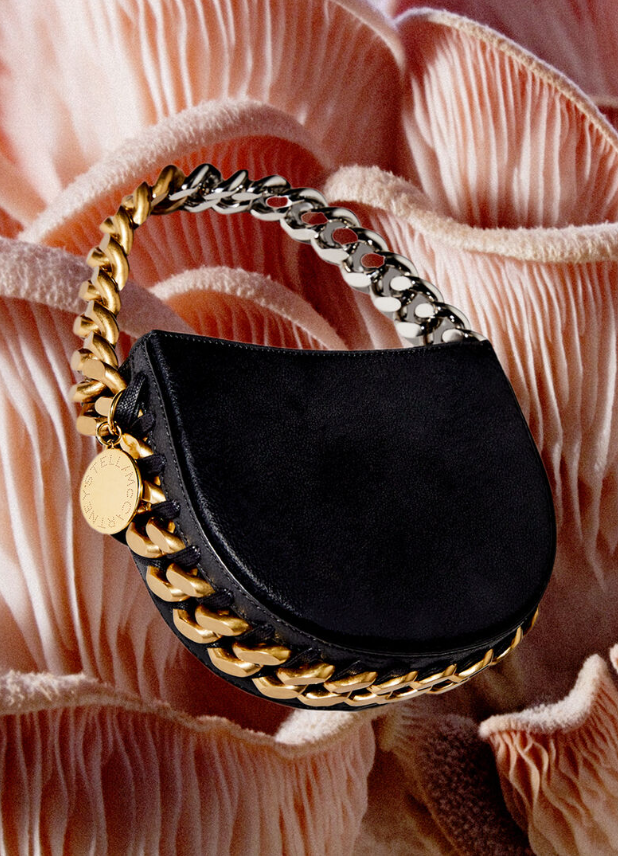Crafting Authentic Fashion Narratives
The Power of Purpose in Storytelling: Navigate how triple impact can help us define our purpose and drive transformational change to craft genuine narratives
In the dynamic world of brand narratives and marketing, storytelling has become a predominant tool to engage and captivate audiences. However, while aesthetics, creativity, and strategy are all essential elements in fashion, there's a vital ingredient often overlooked: PURPOSE. Understanding how to use the ‘Triple Impact framework can help you define your purpose. Purpose is the key to transformational change and authentic storytelling, ultimately driving deeper connections with consumers and fostering community.
Triple Impact in Fashion
The triple bottom line is a business concept that brands and organizations should commit to measuring their social and environmental impact—in addition to their financial performance—rather than solely focusing on generating profit or the standard “bottom line. Beyond the traditional measure of success - profits - the Triple Impact shares below dimensions:
Profit (Economic Value): Reflecting responsible and sustainable economic growth that benefits all stakeholders. Stella McCartney, for instance, stands as a beacon of how luxury fashion can be profitable yet remain staunchly committed to sustainability and cruelty-free practices.
People (Social Value): The ethical commitment to societal well-being, ensuring fair practices, community development, and respect for all individuals involved. Organizations like Fashion Revolution, with their “Who Made My Clothes?” campaign, highlight the humans behind fashion, pushing for transparency and ethical practices across the board.
Planet (Environmental Value): Prioritizing ecological balance through sustainable practices, resource conservation, and a pledge to minimize harm. Suppliers such as Tencel are prime examples, as they produce sustainable textile fibers with environmentally responsible processes, emphasizing the blend of innovation with ecological care.
Image: Fashion Revolution
How the Triple Impact Shapes Fashion's Purpose
Purpose transcends the confines of profit. It answers the 'why' behind a brand's existence, representing its genuine commitment to societal and environmental change. By deeply integrating the Triple Impact principles:
Profit: Brands find a direction that is not just market-driven but morally guided.
People: Treat everyone in the fashion process kindly and fairly. It gives rise to a shared vision, aligning internal teams and resonating with external audiences.
Planet: Making fashion in a way that's friendly to our Earth. Brands can then stand out, not just for their products but for their ethos and vision.
With rising consumer consciousness, the fashion industry should look beyond just profits, integrating this holistic approach to make a genuine, positive difference. Furthermore, these three points help brands create meaningful and positive changes.
The Triple Impact's Role in Defining Purpose
Purpose unifies stakeholders through a shared vision of success, now and for the future. Purpose can inspire and mobilize the transformational shift needed to protect our planet and its people, and reward organizations that make it part of how they think, act, and show up. By leveraging the Triple Impact framework, we can illuminate this overlooked shade, bringing clarity to our genuine purpose. The Triple Impact framework isn't just a business model; it's a compass that directs brands toward a deeper, more genuine purpose. Here's how:
Holistic Vision: Instead of just eyeing profits, triple impact forces brands to consider the well-being of people and the planet. This multi-dimensional focus cultivates a holistic, more encompassing vision than profit alone.
Sustainability and Legacy: A brand's purpose, defined by the Triple Impact, isn't just about today's success but about leaving a lasting positive mark. It's about building a legacy that future generations can be proud of.
Stakeholder Unity: With a purpose derived from the Triple Impact, brands can unify stakeholders, from employees to suppliers to consumers, under a shared vision of success rooted in societal and environmental well-being.
“The missing ingredient in driving transformational change often lies in how we translate purpose into positive impact.”
By deeply integrating the Triple Impact principles:
Brands find a direction that is not just market-driven but morally guided.
It gives rise to a shared vision, aligning internal teams and resonating with external audiences.
Brands can then stand out, not just for their products but for their ethos and vision.
Translating Purpose into Positive Impact through Storytelling
This business concept that firms, brands, and everybody's committing to. Because impact should be measured, and in this case, by using the triple impact, you are helping your customers, your community, understand where they are putting their money and they are putting their resources into the social and environmental impact and not only focusing on the profit but also on the purpose.
But if you have a defined strong purpose, a shared vision of success that validates and benefits these three aspects. Then it is going to be very hard to define your story because without a missing ingredient, let's say here on driving transformational change with lights on how we translate purpose into positive impact.
With a defined purpose, brands are armed with evocative tales waiting to be told. In fashion, traceability and best practices are in need to be communicated. This is how brands do it:
Authentic Narratives: Stella McCartney doesn't merely retail luxury wear; each collection narrates a tale of sustainable luxury, vegan materials, and ecological commitment.
Human-centric Chronicles: The true magic unfolds when the spotlight shifts to the artisans behind the scenes. Organizations like Remake amplify this by launching campaigns like “Wear Your Values”, urging consumers to align their fashion choices with ethical practices.
Quantifiable Narratives: Highlighting tangible outcomes, such as the number of artisans supported, waste reduced, or traditional techniques upheld, lends credibility and weight to a brand's story.
Engaging Chronicles: Evolving storytelling techniques, be it through augmented reality experiences or curated brand exhibitions, can immerse audiences in a brand's ethos, fostering genuine connections. Organizations like Redress focus on reducing waste in the fashion industry by organizing the EcoChic Design Award. Through online platforms, they showcase the journey of sustainable designers, integrating audiences into the heart of sustainable fashion innovation.
Image: Frayme Mylo™️ Stella McCartney
By consciously blending purpose with storytelling, fashion brands can thread stories that stretch beyond the confines of fabric, encapsulating ideals, commitments, and transformative ethos.
Can the Fashion Industry ever be Sustainable?
Watch back the Zero Waste Berlin Festival Fireside Chat, where our Founder, Mariel Jumpa, together with Bojana Drača (Founder of Farrah Floyd), explores the different approaches they have taken to be part of making the fashion industry more sustainable. Is there synergy in the sustainable fashion market to make changes in the industry? Is achieving a sustainable fashion industry even possible? Watch the full video.
Ready to elevate your fashion brand's story?
Let's chat about the Triple Impact and how it can shape your sustainability journey. Together, we'll craft a powerful narrative that captures your brand's true purpose in the sustainable and slow fashion realm.
Book a session with us and let's make your brand story get amplified globally!




